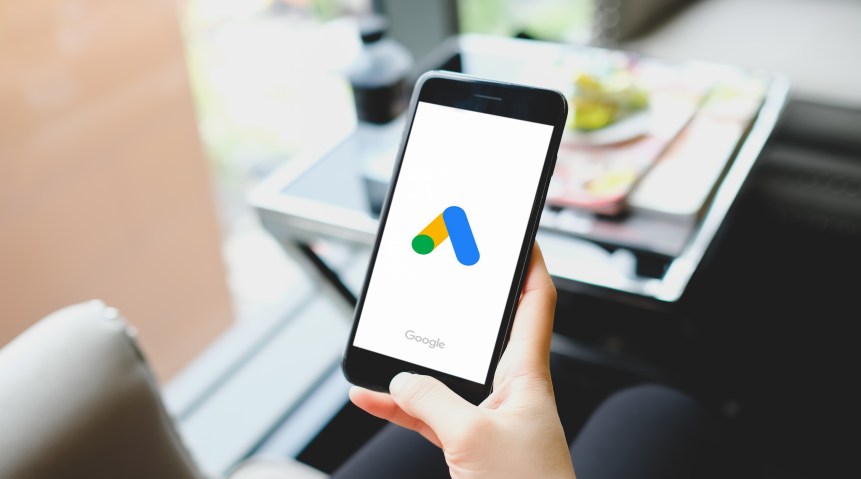- Home
Google AdWords หรือหลายคนเรียกว่า google ads เป็นแพลตฟอร์มโฆษณาออนไลน์แบบจ่ายต่อคลิกที่ช่วยให้ผู้ลงโฆษณาสามารถแสดงโฆษณาเว็บไซต์บนหน้าผลลัพธ์ของเครื่องมือค้นหาของ Google ขึ้นอยู่กับคำหลักที่ต้องการกำหนดเป้าหมาย ธุรกิจต่าง ๆ จ่ายเงินเพื่อให้โฆษณาเว็บไซต์ของตนอยู่ในอันดับต้น ๆ ของหน้าผลการค้นหา เนื่องจากแพลตฟอร์ม Google AdWords ทำงานโดยใช้โฆษณาแบบจ่ายต่อคลิก (PPC) คือทำการตลาดออนไลน์ผ่านเครื่องมือค้นหาเรียกว่า Search engine marketing (SEM) คุณจะเสียเงินต่อเมื่อมีผู้เยี่ยมชมคลิกโฆษณาของคุณเท่านั้น
Google AdWords ทำงานเหมือนกับการประมูลที่ผู้คนเสนอราคาสำหรับการคลิก เพื่อให้มีการจัดอันดับสูงสุดในหน้าการค้นหาของคำค้นหานั้น ๆ อย่างไรก็ตาม ไม่จำเป็นว่าผู้เสนอราคาสูงสุดจะชนะเสมอไป นอกเหนือจากเรื่องเงินแล้ว Google ยังพิจารณาคะแนนคุณภาพของเว็บไซต์ เพื่อให้แน่ใจว่าผู้ที่คลิกโฆษณาจะได้รับประสบการณ์ที่ดีที่สุดในการค้นหา
Table of Contents
ToggleGoogle AdWords หรือ Google ads คืออะไร เป็นระบบโฆษณาที่ Google พัฒนาขึ้นเพื่อช่วยให้ธุรกิจเข้าถึงตลาดเป้าหมายออนไลน์ผ่านแพลตฟอร์มเครื่องมือค้นหาและเว็บไซต์พันธมิตร ไซต์พันธมิตรเหล่านี้โฮสต์โฆษณาแบบข้อความหรือรูปภาพที่ปรากฏบนหน้าเว็บหลังจากที่ผู้ใช้ค้นหาคำหลักและวลีที่เกี่ยวข้องกับธุรกิจและผลิตภัณฑ์หรือบริการของธุรกิจคุณ บน Google.com โฆษณา AdWords มักจะปรากฏในตำแหน่งเฉพาะที่ด้านบนและด้านขวาของหน้าผลการค้นหา
คุณสามารถเลือกคำหลักที่เกี่ยวข้องกับแบรนด์ ผลิตภัณฑ์ บริการ และธุรกิจของคุณได้ เมื่อลูกค้าค้นคำหลัก หรือที่เรียกว่า Keyword ( คีย์เวิร์ด ) ที่เกี่ยวข้องกับคำหลักที่คุณเลือกในการทำ Google AdWords เว็บไซต์ของคุณจะแสดงให้กลุ่มที่มีการค้นหาคำหลักที่เกี่ยวข้องเห็น และคุณจะจ่ายเฉพาะเมื่อผู้ใช้คลิกเว็บโฆษณาของคุณและเยี่ยมชมเว็บไซต์เท่านั้น ซึ่งเรียกได้ว่า การโปรโมตแบบนี้เป็นการทำการตลาดแบบตั้งรับนั้นเอง

Google AdWords ทำงานบนระบบการประมูล เมื่อผู้ใช้พิมพ์คำค้นหาในเครื่องมือค้นหา Google จะทำการพิจารณากลุ่มผู้ลงโฆษณาบน Google AdWords และตัดสินใจว่ามีการประมูลหรือไม่ หากมีผู้ลงโฆษณามากกว่าหนึ่งรายเสนอราคาสำหรับคำหลักที่ Google ตัดสินใจว่าเกี่ยวข้องกับคำค้นหาของผู้ใช้ การประมูลจะถูกเรียกโดยอัตโนมัติ
สิ่งสำคัญที่ควรทราบ Keyword อาจจะไม่ใช่คำค้นหาจริง ๆ แต่จะต้องเป็นคำที่ให้ในการค้นหามากที่สุด หรือมีค้นค้นหาคำนั้น ๆ ที่เกี่ยวข้องกับธุรกิจของคุณมากที่สุด (อ่านเพิ่มเติมเกี่ยวกับ keywords คืออะไร ในการค้นหาบน Google )
จำไว้ว่า ผู้ลงโฆษณาเสนอราคาตามคำหลัก หรือ Keyword ซึ่งไม่ใช่คำค้นหา หากตัดสินใจว่าต้องการใช้จ่ายเท่าใดและสามารถสร้างกลุ่มคำหลักที่จับคู่กับโฆษณาและหน้า Landing Page ที่เกี่ยวข้องได้ Google ป้อนคำหลักจากบัญชีของคุณที่เห็นว่าเกี่ยวข้องมากที่สุดในการประมูลด้วยราคาเสนอสูงสุดที่คุณตั้งไว้ และเว็บไซต์ของคุณจะขึ้นไปอยู่ในตำแหน่งตามที่ Google กำหนด
หากต้องการใช้ Google AdWords สำหรับการทำ Digital Marketing เพื่อเพิ่มการเข้าถึงของกลุ่มเป้าหมายให้มากขึ้น ยิ่งธุรกิจของคุณมีเว็บไซต์ จะทำให้การทำ Google AdWords นั้นง่ายขึ้นมาก ๆ โดยจะมีขั้นตอนง่าย ๆ ที่ทาง บริษัท Asia Search สรุปไว้เป็นข้อ ๆ ดังนี้

Google AdWords แพลตฟอร์มที่เหมาะกับการทำ Digital Marketing สำหรับการโฆษณาออนไลน์ผ่านบริการต่าง ๆ ของ Google และเครือข่ายอันกว้างขวางของแอปและเว็บไซต์ของทาง Google บริการของ Google ทั้งหมดที่คุณสามารถลงโฆษณาได้ คือ
แคมเปญและประเภทโฆษณาที่เหมาะกับ Google AdWords
- ค้นหาด้วยข้อความ (โฆษณาแบบข้อความบน Google Search )
- โฆษณา Google Shopping (โฆษณาผลิตภัณฑ์)
- โฆษณาวิดีโอ ( โฆษณาบน YouTube)
- โฆษณาแบบรูปภาพ (โฆษณาแบบรูปภาพและแบนเนอร์)
- โฆษณาแอป (ผ่าน Google AdMob)
เรียนรู้เพิ่มเติมเกี่ยวกับ ประเภทโฆษณาบน Google ที่มีให้บริการ
สองวิธีหลักที่ AdWords สามารถช่วยเหลือธุรกิจไม่ว่าจะเป็นธุรกิจค้าปลีกออนไลน์ หรือธุรกิจบริการร้านค้าทั่วไป คือการปรับปรุงการรับรู้ถึงแบรนด์และดึงดูดการเข้าชมที่มีคุณภาพมายังเว็บไซต์ของคุณ เพื่อให้กลุ่มเป้าหมายที่กำลังมองหาคุณอยู่ สามารถเจอคุณได้อย่างรวดเร็วด้วยการทำ Google AdWords และยังมีประโยชน์อื่น ๆ ของการใช้ Google AdWords ดังนี้
บริการดูแล Google AdWords ช่วยให้ลูกค้าค้นหาสิ่งที่พวกเขาต้องการได้รวดเร็วและปรับแต่งได้มากขึ้น การใส่ตำแหน่งการขายที่ไม่ซ้ำใครในโฆษณาของคุณยังสามารถช่วยให้กลุ่มเป้าหมายทราบได้ว่าเหตุใดธุรกิจของคุณจึงดีกว่าคู่แข่งอีกด้วย Google AdWords เป็นแพลตฟอร์มโฆษณาที่ราคาไม่แพงและใช้งานง่าย ซึ่งสามารถเพิ่มการเข้าชมและสร้างโอกาสเพิ่มยอดขายให้กับธุรกิจของคุณได้อย่างแน่นอน
และคุณยังสามารถทำ SEO เพิ่มประสิทธิภาพของเว็บไซต์ เพื่อให้เว็บของคุณติดอันดับในหน้าแรก ๆ ควบคู่ไปกับ การทำโฆษณาแบบจ่ายต่อคลิก ยิ่งจะทำให้เว็บธุรกิจของคุณมีความน่าเชื่อถือยิ่งขึ้น ทางเรามีบริการ รับทำ seo สายขาว สามารถเข้ามาปรึกษาได้เลย

บริษัท Digital Marketing Agency ที่มีประสิทธิภาพสูงพร้อมให้บริการธุรกิจของคุณด้วยความเป็นมืออาชีพ เพื่อให้แบรนด์ธุรกิจของคุณประสบความสำเร็จกับแคมเปญการตลาดออนไลน์